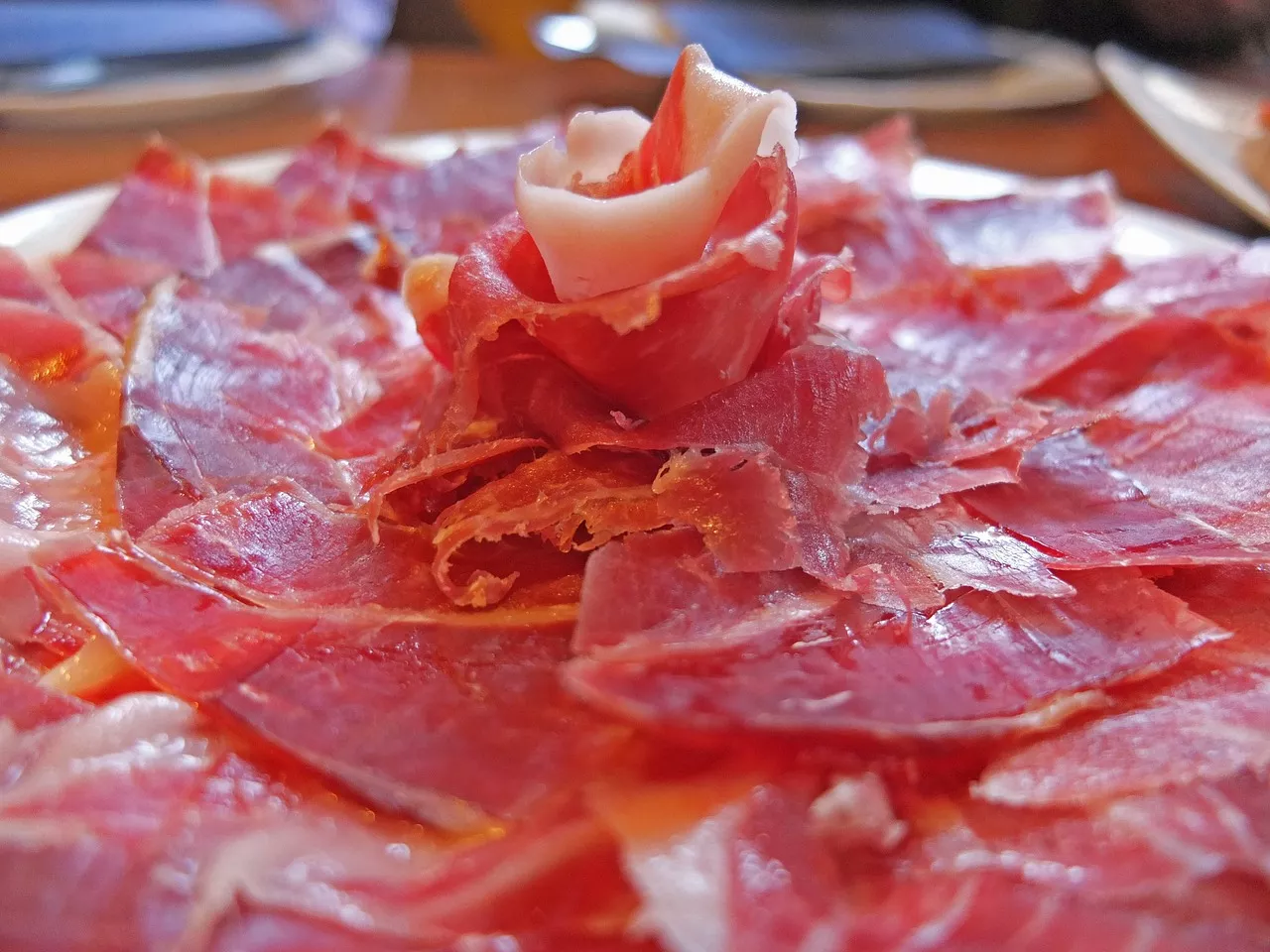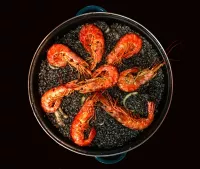Introduction
Are you craving the vibrant flavors of Spain? Do you want to bring the lively atmosphere of a Spanish tapas bar to your own kitchen? Look no further than this article, where we will guide you on a culinary journey from Spain to your table, unleashing your culinary skills with homemade tapas.
Tapas, the small and flavorful dishes that are meant to be shared, have become a worldwide phenomenon. And it's no wonder why - they offer a delectable taste of Spanish cuisine, a perfect balance of bold flavors and diverse ingredients. From classic options like patatas bravas and gambas al ajillo to more inventive creations, tapas allow you to explore and experiment with different flavors and textures.
Whether you're a beginner or a seasoned chef, making tapas at home is an adventure waiting to happen. So, grab your apron and join us as we dive into the world of Spanish tapas. We'll provide you with foolproof recipes, expert tips, and creative ideas to help you impress your family and friends with an authentic Spanish feast. Let's get cooking and bring the taste of Spain to your table!
The History of Tapas
Tapas have a rich history that dates back centuries in Spain. The word "tapas" actually means "lid" or "cover" in Spanish. The story goes that in the past, bartenders used to serve drinks with a small plate of food on top to keep flies away and to prevent customers from getting too drunk. This tradition eventually evolved into serving small dishes of food alongside drinks.
Tapas are deeply rooted in Spanish culture and are enjoyed as a social activity. It's common to visit multiple tapas bars in one evening, sampling different dishes and enjoying the company of friends and family. The variety of tapas is endless, ranging from simple and rustic to intricate and gourmet. Each region of Spain has its own specialties and unique twists on traditional tapas.
Today, tapas have gained popularity worldwide, with many restaurants and home cooks embracing the concept. Making tapas at home allows you to experience the true essence of Spanish cuisine and recreate the lively and convivial atmosphere of a tapas bar in your own dining room.
Benefits of Making Homemade Tapas
Making tapas at home offers several benefits that go beyond just the delicious flavors. Firstly, it allows you to exercise your creativity in the kitchen. With tapas, the possibilities are endless. You can experiment with different ingredients, flavors, and combinations to create your own unique dishes. It's a great way to showcase your culinary skills and impress your guests.
Secondly, making tapas is a fantastic way to bond with family and friends. Tapas are meant to be shared, and preparing them together can be a fun and interactive experience. You can involve everyone in the cooking process, assigning tasks and enjoying each other's company while preparing a feast. It's a great opportunity to create lasting memories and strengthen your relationships.
Additionally, making tapas at home is often more cost-effective than dining out. You can purchase the ingredients in bulk and make smaller portions, reducing waste and saving money. Plus, you have the freedom to customize the recipes to suit your dietary preferences and restrictions. Whether you're vegetarian, gluten-free, or have any other dietary requirements, you can easily adapt tapas recipes to fit your needs.
Essential Ingredients for Tapas
To create authentic Spanish tapas, it's important to have a few key ingredients on hand. These ingredients form the foundation of many classic tapas dishes and add the distinctive flavors that make them so irresistible.
1.
Olive Oil: Olive oil is a staple in Spanish cuisine and is used generously in tapas recipes. It adds a rich and fruity flavor to dishes and is often used for frying, sautéing, and dressing.
2.
Garlic: Garlic is another essential ingredient in Spanish cooking. It adds depth and complexity to dishes and is often used in combination with olive oil to create flavorful sauces and marinades.
3.
Paprika: Paprika, especially the smoky Spanish variety, is commonly used in tapas recipes. It adds a subtle heat and a distinct smoky flavor that elevates the taste of dishes like patatas bravas and chorizo.
4.
Chorizo: Chorizo, a Spanish cured sausage, is a popular ingredient in many tapas dishes. It has a rich and spicy flavor that pairs well with other ingredients, such as potatoes or seafood.
5.
Manchego Cheese: Manchego cheese, made from sheep's milk, is a classic Spanish cheese that is often served as part of a tapas spread. It has a creamy and slightly nutty flavor that complements both savory and sweet tapas.
6.
Seafood: Spain is known for its incredible seafood, and many tapas recipes feature fish and shellfish. From gambas al ajillo (garlic shrimp) to pulpo a la gallega (Galician-style octopus), seafood tapas showcase the best of Spain's coastal cuisine.
Having these essential ingredients in your pantry will ensure you can create authentic and flavorful tapas dishes at home.
Traditional Tapas Recipes
When it comes to traditional tapas, there are a few classic recipes that you simply can't miss. These dishes have stood the test of time and continue to be beloved by Spaniards and tapas enthusiasts around the world. Let's explore some of these iconic recipes:
1.
Patatas Bravas: Patatas bravas is a quintessential tapas dish that features crispy fried potatoes served with a spicy tomato sauce and a creamy garlic aioli. It's a crowd-pleaser and a must-have at any tapas party.
2.
Tortilla Española: Tortilla Española, also known as Spanish omelette, is a hearty and satisfying tapas dish made with eggs, potatoes, and onions. It's a versatile dish that can be enjoyed warm or at room temperature.
3.
Gambas al Ajillo: Gambas al ajillo, or garlic shrimp, is a simple yet flavorful tapas dish that is quick to prepare. The shrimp are cooked in olive oil with garlic and chili flakes, resulting in a dish that is packed with bold flavors.
4.
Pan con Tomate: Pan con tomate is a classic Spanish tapas that showcases the simplicity of the ingredients. It consists of toasted bread rubbed with garlic and ripe tomatoes, then drizzled with olive oil and sprinkled with salt. It's a delicious and refreshing option that pairs well with other tapas.
5.
Croquetas: Croquetas are small, crispy fried balls of bechamel sauce mixed with various fillings, such as ham, chicken, or seafood. They are a popular tapas option and are often served as a snack or appetizer.
These traditional tapas recipes are just the tip of the iceberg. There are countless other dishes to explore, each with its own unique flavors and preparations. Experiment with different recipes and find your favorites to create a tapas experience that suits your taste.
Modern Twist on Tapas
While traditional tapas recipes are timeless, there's also room for creativity and innovation in the world of tapas. Many chefs and home cooks are putting their own twist on classic recipes, incorporating new ingredients and techniques to create exciting and contemporary tapas dishes.
One example of a modern twist on tapas is the use of fusion flavors. Chefs are combining Spanish ingredients and techniques with influences from other cuisines, creating dishes that are both familiar and unexpected. For example, you might find tapas with Asian-inspired flavors, such as soy-glazed beef skewers or tempura vegetables with a Spanish twist.
Another trend is the emphasis on seasonal and locally sourced ingredients. Tapas dishes are being crafted around the freshest produce and proteins available, showcasing the flavors of the season. This not only enhances the taste of the dishes but also supports sustainable and environmentally friendly practices.
Experimenting with modern tapas allows you to push the boundaries of traditional flavors while still paying homage to the essence of Spanish cuisine. Don't be afraid to mix and match ingredients, try new cooking techniques, and let your creativity shine.
Tips for Hosting a Tapas Party
Hosting a tapas party is a fantastic way to share the flavors of Spain with your family and friends. It's a fun and interactive dining experience that encourages conversation and exploration. Here are some tips to help you host a successful tapas party:
1.
Plan your menu: Start by selecting a variety of tapas dishes that cater to different tastes and dietary preferences. Aim for a balance of vegetarian, seafood, and meat options. Consider the number of guests and the size of your dishes to ensure everyone gets a chance to try a little bit of everything.
2.
Preparation is key: Many tapas dishes can be prepared in advance, which allows you to spend more time with your guests during the party. Prepare as much as you can ahead of time, such as marinating meats, chopping vegetables, and making sauces. This way, you can simply assemble and cook the dishes when your guests arrive.
3.
Presentation matters: Tapas are meant to be visually appealing, so take the time to present your dishes beautifully. Use small plates, bowls, and serving platters to showcase each tapas dish individually. Garnish with fresh herbs, drizzle with sauces, and sprinkle with colorful spices to enhance the visual appeal.
4.
Encourage sharing: Tapas are all about sharing and trying different flavors. Encourage your guests to mix and match the dishes, creating their own unique combinations. Provide small plates, napkins, and toothpicks to make it easy for everyone to sample and enjoy the tapas.
5.
Pair with Spanish wines: To complete the tapas experience, consider pairing your dishes with Spanish wines. Spain is known for its fantastic wine production, offering a wide range of options to complement the flavors of tapas. From crisp white wines to bold reds, there's a Spanish wine for every palate.
Hosting a tapas party is a wonderful way to bring people together and create lasting memories. Embrace the convivial nature of tapas, and enjoy the lively and social atmosphere that it brings.
Wine Pairings for Tapas
When it comes to pairing wine with tapas, there are a few guidelines that can help you make the most of your dining experience. Here are some wine suggestions to complement different types of tapas:
1.
Crisp Whites: For seafood-based tapas, such as gambas al ajillo or pulpo a la gallega, opt for a crisp and refreshing white wine. Albariño, a white wine from the Galicia region of Spain, is an excellent choice. It has bright acidity and citrus notes that complement the flavors of seafood.
2.
Rosé: Rosé wines are incredibly versatile and can pair well with a wide range of tapas. They are especially well-suited for dishes with a slight spice or heat, such as patatas bravas or chorizo. Look for a dry rosé with fruity and floral notes.
3.
Light Reds: For meat-based tapas, such as meatballs or grilled lamb skewers, consider light red wines with moderate tannins. Rioja, a red wine from the Rioja region of Spain, is a classic choice. It has a balanced acidity and flavors of red fruit that pair well with a variety of tapas.
4.
Sherry: Sherry is a fortified wine from the Andalusia region of Spain and is a traditional accompaniment to tapas. It pairs particular

 From Tapas to Paella Authentic Spanish Cuisine
From Tapas to Paella Authentic Spanish Cuisine Exploring the Future of Food How Technology is Impacting
Exploring the Future of Food How Technology is Impacting



